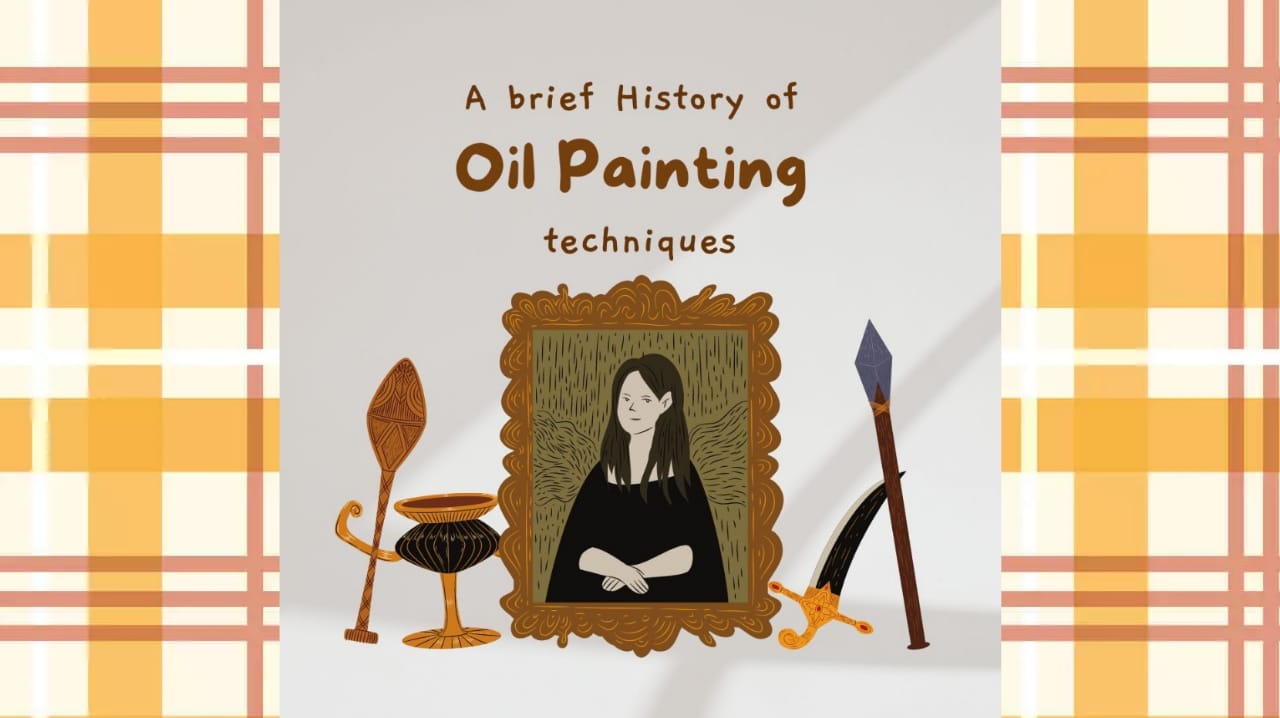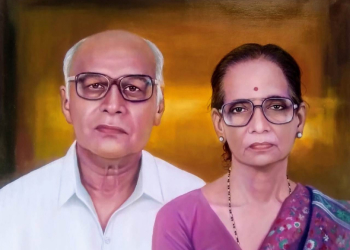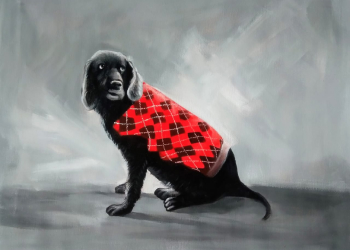The article explores the history of oil painting and its development through the ages.
Introduction
Oil painting is the process of painting with pigments and a drying oil substance as a binder. For centuries, it has been the most popular technique for artistic painting on wood panels or canvas.
According to research, oil painting originated in ancient India's Bamiyan region, where early Buddhist artisans painted a cave complex located in present-day Afghanistan during the 7th century. Discoveries were made in some 50 caves with scenes from the Buddha's life painted on them, 12 of which used oil-based paints with walnut and poppy seed oils as the binding medium for ground-up mineral pigments.
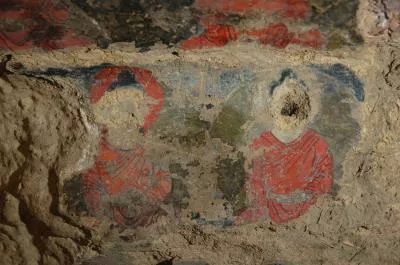 Bamya Cave oil painting
Bamya Cave oil painting
(Image credits: National Research Institute for Cultural Properties, Tokyo)
Some 900 years later, in the 15th century, oil painting reached Europe, where artists quickly adopted it. Although the oil painting technique reached Europe 900 years later, the subsequent innovations in oil painting techniques were driven by European artists.
Oil painting History: The Flemish technique
Oil painting as a medium became widely used when pioneering Flemish artists such as Hubert and Jan Van Eyck (1385-1441) established the Flemish Technique of oil painting in the early 15th century.
The Flemish oil painting technique emerged from the older discipline of egg tempera in an attempt to overcome the limitations of an egg'-based media. Painters adopting the Flemish oil painting technique worked on a white foundation of gesso layers painted onto a sturdy wooden panel. The white base was chosen so that the successive thin layers of oil paint would show through, enabling the works to glow as if lit. The Flemish oil painting style employs a strict methodology for the development of effective oil paintings, making drawing revisions impossible during the later painting process; however, this technique benefits from a precise line drawing as a framework upon which the later painting can be made.
In the Flemish oil painting technique, various studies and sketches would be developed before a final drawing was created. This drawing would then be transferred by a method known as pricking and pouncing to the white ground. Pricking created pin holes that exactly followed the image. The sketch was then thrown to the ground and pounced on while still in position. Pouncing entailed tapping the drawing vigorously with a small cloth bag packed with charcoal dust. The dust flowed through the pricked holes, leaving a dotted outline on the white ground when the artwork was removed.
The artist would next connect the dots with ink, egg tempera, watercolor, or thin oil paint applied with a delicate brush or pen. When the line drawing was dry, it was isolated by painting over a coat of varnish. This also helped to keep the absorbent gesso surface sealed. An imprimatura layer was created by adding transparent pigment to this layer of varnish (typically a warm earth color). This colored white background enabled the design to show through while protecting it. It would be necessary to tint the varnish carefully because it sets the overall tone of the oil painting, and if too dark would contradict the purpose of painting in transparent layers over a white base. When the varnish layer has dried, the artist would begin painting over the sealed sketch with transparent glazes for the shadows. More tone and hues would be gradually added in succeeding layers, with thicker and more opaque paint employed for the lighting.
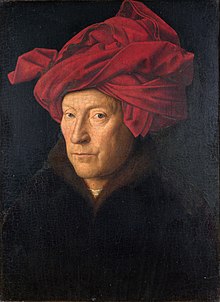 Portrait of a Man by Jan van Eyck (Image Credits: Wikicommons.org)
Portrait of a Man by Jan van Eyck (Image Credits: Wikicommons.org)
Early Flemish artists are known to have employed soft spherical brushes made of Minever (ermine) hair wrapped and kept in a segment of quill as a ferrule, as well as hogs hair bristle brushes. The finely ground-colored pigment binds in linseed or walnut oil. The possibility that other balsams and resins were also used to make mediums such as boiled and polymerized oils with siccatives such as lead. During that period oil paintings were often limited in size, owing to the weight and difficulty that came with transporting bigger solid oak panels.
Although the style originated with the Flemish, it was quickly adopted by the German artist Albrecht Dürer (1471-1528), who visited both Italy and the Flanders region of Belgium following the completion of his apprenticeship in 1489, and the Sicilian artist Antonello da Messina (1430-1479).
Antonello da Messina is said to have trained Giovanni Bellini (1430-1516), who taught Giorgione (1477-1510) and Titian (1485-1576). Another influence at the time would have been the Flemish painter Rogier van der Weyden, recognized as a brilliant artist who used these remarkable new 'oil paints.' In the middle of the 15th century, he also visited Italy and influenced a large number of Italian artists. As a result, the new creative painting technique employing oil arrived in Italy and had a significant impact on the great mushrooming of artistic work known as the Renaissance period. Some artists, however, refused to embrace this breakthrough paint. Michelangelo is said to have mocked Leonardo Da Vinci for using oil paints, while others, such as Titian, were quick to adopt the new medium, adding clever improvements of his own.
Order Your Portrait Painting from Photo Today
Oil painting History: Titian and the Venetian School
Tiziano Vecelli, better known as Titian, was the key leader of the oil painting style known as the Venetian school. The approach he used was based directly on the Flemish method of oil painting and had certain similar principles, such as utilizing transparent glazes for shadows and more opaque paint for lighting, but it differed from the Flemish method in several essential ways.
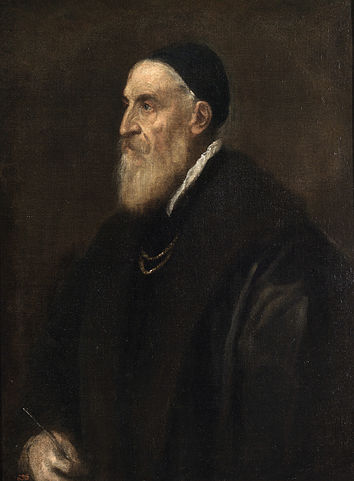 Titan (full name: Tiziano Vecellio) (Image Credits: Wikicommons.org)
Titan (full name: Tiziano Vecellio) (Image Credits: Wikicommons.org)
Essentially, the Venetian approach sprang from the desire of different patrons (mostly the church and the aristocracy) for bigger and larger works of oil painting art. It became quickly apparent that building huge solid panels of wood for oil painting was impractical due to extra weight and shipping problems. As a result, many painters experimented with a variety of surfaces, before the canvas was eventually accepted as the new support. It was lightweight, and the finished artwork could be rolled up for easy portability. However, the texture and content of the cloth created additional technical issues that had to be resolved.
The first issue was gesso (gypsum mixed with animal glue), which bonded nicely on both wooden panels and canvas but was deemed to be too brittle, cracking and breaking all too easily. Further experiments with oil or honey led to a more flexible gesso, which eventually led to the use of white-lead pigment bonded in oil as the best primer for canvas. However, these experiments with grounds and primers revealed that oil, namely linseed oil, when applied to raw linen or hemp canvas damaged the cloth, causing it to decay. As a result, artists began priming the raw canvas with size (weak animal glue) to seal the canvas fibers, keeping the canvas from coming into direct touch with the primer and, preventing the canvas from rotting. The gloss imparted to the paint in the Flemish process was the next challenge. While this allowed the colors to appear full and saturated, the glare posed a significant difficulty in large-scale oil paintings, so the medium itself, the carrier of the pigment, was modified next.
Titian, the most renowned innovator of the Venetian oil painting technique, was said to have made several modifications to his mediums to achieve a less reflecting surface, removing the additions of various balsams and resins favoring a medium made entirely of raw oil. This fundamentally altered paint handling and it was discovered that hog's hair bristle brushes performed better on the rough canvas and shorter paint than the softer round brushes that had previously been preferred in the Flemish oil painting method.
Sharp edges come naturally in the Flemish style due to its use of smooth ground, soft brushes, and longer paint, but this new mix of flexible, rougher ground (canvas), stiffer brushes, and shorter paint made painting hard, sharp edges much more difficult. However, there were some advantages to this. The softer edges that formed as the painting continued in the Venetian approach gave the painting a much more natural appearance, which lent itself well to making a more life-like painting. Titian made extensive use of the newfound technique. There are very few real sharp edges in nature. Edges become softer, occasionally blending, getting lost, and then found again, and this new way of painting with softer edges drove painting one step closer to realism.
Another development occurred because Michelangelo criticized Titian for not being as accomplished a draughtsman as himself. This motivated Titian to make a softer (in terms of edges) underpainting, giving him more leeway for correction in later overpainting.
In following overpainting, the artist would follow the Flemish oil painting style, first creating the shadow passages with transparent glazes and then working more opaque colors into the still-wet glaze. The artist would then continue in the light with more opaque, heavier areas of paint. Once a layer was completed to the artist's satisfaction, or if a certain effect was wanted, the layer was allowed to dry before being painted repeatedly over, repeating the method as many times as needed.
Several more techniques were found during this period of intense development, the first of which was scumbling. Scumbling is the application of an opaque bright shade thinly over an area of a darker shade. This was accomplished by taking a small bit of paint and adding a little more medium to make it thin and semitransparent, similar to how cosmetic makeup powder is applied to a woman's face. It is a highly useful technique that can be employed when the artist wants anything to appear softer generally, such as a foggy horizon in a landscape painting.
Order Your Oil Portrait Painting on Canvas from Photo Today
Oil painting History: The Direct Painting Method
The Direct Painting method is the final technique to be discussed in the development of oil painting techniques. The Direct way of painting differs from both the Flemish and Venetian methods in that it does not require any preliminary drawing or underpainting and is best finished in one sitting with only one layer of paint. This technique is known as Alla Prima in Italian and Premier Coup in French.
All of the great painters of the past used the Direct Painting method, though it was normally only used when the artist needed to do brief sketches or color notes in preparing for a larger piece. Although some argue that some of these works are still sketches, Frans Hals (1580-1666) was the first artist to be acknowledged as having finished works employing the Direct Painting method.
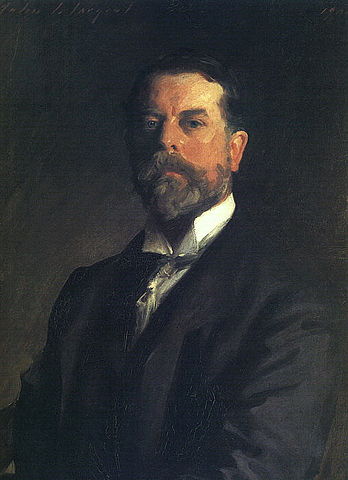 John Singer Sargent Self portrait 1906 (Image Credits: Wikicommons)
John Singer Sargent Self portrait 1906 (Image Credits: Wikicommons)
Due to its dominance in the nineteenth century under the hands of such famous artists as John Singer Sargent (1856-1925), Anders Zorn (1860-1920), and Phillip Alexius de Laslo (1869-1937), the Direct Painting method is today the most recognized method of oil painting.
Although oil painting techniques have changed little over the centuries, there have been technical advancements, most notably in the development of paint tubes in 1841, which allowed artists to paint outside, en plein air, for the first time, most notably Claude Monet (1840-1926) and the other impressionists. In the nineteenth century, improvements in chemistry also resulted in the development of a new variety of colors, and today we have mediums based on the modified resin or alkyd.
Conclusion:
In conclusion, all major developments in the oil painting technique occurred in the fifteenth and sixteenth centuries, and these techniques are used in the same way today as they were when they were first discovered. Over the centuries artists have added very little to the Flemish and the Venetian techniques, with perhaps the exception of Rembrandt Van Rijn (1606-1669), who, rather than inventing new techniques, combined the various methods to create his techniques. Applying thick, heavy layers of impasto (sculptured paint) over rich glazed layers. Rembrandt was an exceptional case however and deserves exploration of his own.
Although the pace of innovation in oil painting techniques may have slowed down, there was another direction in which rapid artistic development was taking place. Of artistic styles and art movements like Impressionism, Post-Impressionism, Realism, Cubism, and Photorealism. You can read about the development of the various art movements in A Brief History of Paintings, Portraits & Art Development of painting movements. And about the artists and painters involved in the art movements like portrait painting artist John Singer Sargent and Indian modernist oil painting artist K.C.S Paniker.
Fortunately, you dear reader, don't have to know about art history to appreciate good art or to order a custom handmade painting from a photo. Ordering a painting today is easier than it has ever been in the past. If you live in the United States or the Middle East, such as Turkey, the United Arab Emirates, Qatar, Kuwait, or Oman, you can commission a custom handmade portrait painting artwork to Paintphotographs.com. Once the artist has executed the commission in his studio, and the oil painting is approved, the portrait oil painting will be delivered to the client's address. It's as though an artist is always close, whether you reside in New York, California, Los Angeles, Dubai, Abu Dhabi, Doha, Riyadh, or Muscat.
Custom handmade oil portraits make for excellent gifts like wedding portraits, anniversary portrait gifts or engagement portraits or housewarming gifts, and retirement and farewell gifts. And commemorative portraits, like memorial portraits. Talented artists can also create composite oil portraits from two or more reference photos and pics. Similarly, they can also create pet portrait paintings or create new portrait paintings from blurry old black-and-white photos, handmade classic and contemporary reproductions, or even elegant graphite and charcoal sketches.
About Us:
Paintphotographs.com is India's leading custom art platform. We turn your favorite photos, pics, and images into luxurious handmade portrait paintings. Our work includes handmade portraits, custom oil reproductions, charcoal drawings, and sketches. As a team of accomplished artists, we use museum-quality canvas, the best international brands of colors such as Winsor & Newton and Daler Rawney. We work with various mediums, including oil, acrylic, mixed media, graphite, and charcoal.
To order a custom handmade oil portrait painting you can visit our order now page. You can order custom Wedding Paintings, Couple Paintings, Memorial Paintings, Family Paintings, Baby portraits and Children Paintings, Photo to paintings, and Pet Portrait Paintings from Photo.
You can visit our pricing page to know the prices of our portrait paintings. To connect with us ping us on our chat messenger on the website, ping us on WhatsApp, call us at 918291070650, or drop us an email at support@paintphotographs.com
You can visit our gallery pages to see our work. We make photo to paintings, couple paintings, memorial paintings, Kids and Baby Portrait paintings, God & Religious Paintings, Old Photo to Paintings, Wedding couple Paintings & Marriage Portraits, Family Paintings, Pet Portrait Paintings, Radha Krishna Paintings, Oil Portraits of Gurus, Saints & Holy Men, Charcoal and Pencil Sketches, Custom Landscape & Cityscape paintings, Contemporary Art Reproduction & Replica Paintings, Old Master Reproduction & Replica Art, Monochrome and Black & White portrait paintings, Historical Portraits and Shivaji Maharaj Paintings, Celebrity & Political Leaders Portraits. We can also merge separate photos to create a single seamless painting called Composite portraits to add deceased loved ones to make a family oil portrait as though they were present.
Our custom handmade portraits make beautiful Anniversary Gifts, Engagement Gifts, Birthday Gifts, Retirement Gifts, Housewarming Gifts, Mother's Day gifts, and luxurious gifts for many important occasions.
Paintphotographs.com provides bespoke services for art patrons, interior designers, and architects. It helps you create the perfect pieces for residential and commercial projects and serves as a platform for artists to showcase their work.
If you are an art aficionado interested in writing a guest post on art, connect with us.
Want to read more? Check our reading recommendations below! Please refer to the Notes and Reference section for sources referenced in the article.
Like this story? Then you will love our podcasts on Spotify. Listen to our deep dives and fascinating stories from the art world. Join our nearly 20,000-strong community on Facebook, WhatsApp, and X.
Want to see our art? Join our community of 500,000+ subscribers on the Paintphotographs YouTube channel, Instagram, and Pinterest for some amazing art pics & art videos!
Reference notes
World's oldest use of oil paint found in Afghanistan
https://www.google.co.in/books/edition/The_Oxford_Companion_to_Art/pjzpxQEACAAJ?hl=en

